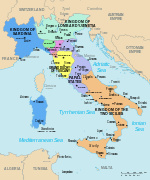Order of Saints Maurice and Lazarus
This articleneeds additional citations forverification.(February 2024) |
| Order of Saints Maurice and Lazarus | |
|---|---|
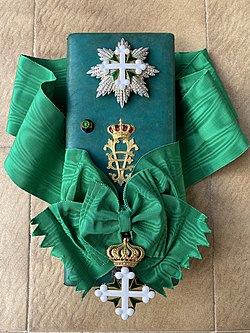 Grand Cross insignia of the Order | |
| Awarded by | |
| Type | Dynasticorder of chivalry |
| Established | 16 September 1572 (Order of Saint Maurice:1434) (Order of Saint Lazarus:1119) |
| Royal house | House of Savoy |
| Religious affiliation | Catholic |
| Motto | FERT (Fortitudo Eius Rhodum Tulit;By his bravery he conquered Rhodes) |
| Eligibility | Military,civilian |
| Awarded for | Distinguished merits |
| Status | Currently constituted |
| Grand Master | (Disputed) |
| Chairman of the Council | Emanuele Filiberto, Prince of Venice[1] |
| Grades | Grand Cordon, Special Class Grand Cordon Grand Officer Commander Officer Knight/Dame |
| Website | ordinidinasticicasasavoia.it |
| Statistics | |
| Total inductees | Circa 2,000 |
| Precedence | |
| Next (higher) | Royal Supreme Order of the Most Holy Annunciation |
| Next (lower) | Royal Order of the Crown |
Ribbon bar | |
TheOrder of Saints Maurice and Lazarus(Italian:Ordine dei Santi Maurizio e Lazzaro) (abbreviated OSSML) is aRoman Catholicdynastic order of knighthoodbestowed by the royalHouse of Savoy.It is the second-oldest order of knighthood in the world, tracing its lineage to AD 1098, and it is one of the rare orders of knighthood recognized bypapal bull,in this case byPope Gregory XIII.[2]In that bull, Pope Gregory XIII bestowed uponEmmanuel Philibert, Duke of Savoyand his Savoy successors, the right to confer this knighthood in perpetuity. TheGrand MasterisPrince Emanuele Filiberto of Savoy, Prince of Venice,also known as the Duke of Savoy, the grandson of the lastKing of Italy,Umberto II.However, Emanuele Filiberto's cousin twice removedPrince Aimone, Duke of Aostaclaims to be grand master ashis fatherclaimed to be head of the house of Savoy.
The order was formerly awarded by theKingdom of Italy(1861–1946) with the heads of the House of Savoy as theKings of Italy.Originally achivalric orderof noble nature, it was restricted to subjects of noble families with proofs of at least eight noble great-grandparents. The order's military and noble nature was and is still combined with a Roman Catholic character.
After the abolition of the monarchy and the foundation of theItalian Republicin 1946, the legacy of the order is maintained by the pretenders of the House of Savoy and the Italian throne in exile.
The order is estimated to include about 2,000 members around the world, with about 200 in the United States. The Order also has roster consultative status with theUnited Nations,as part of the U.N.'sECOSOC.[3]
History
[edit]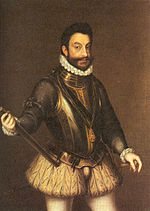
The undisputed continuation of theOrder of St. Lazarusis in the Order of Saints Maurice and Lazarus, which continues under the pretenders to the Italian Crown.
— Michael Foster[4]
Both crosses from its two forerunners still exist in the insignia of their subsequent successor, today's Order of Saints Maurice and Lazarus, founded by amalgamation in 1572.
-
The green-enameledMaltese Crossof theOrder of Saint Lazarus,founded c. 1119
-
The white-enameledcross bottonyof theOrder of Saint Maurice,founded in 1434
Order of Saint Lazarus (1119)
[edit]TheOrder of Saint Lazarus,founded c. 1119, can be traced to the establishment around 1100, of ahospitalforleprosyinJerusalem,Kingdom of Jerusalem,by a group ofcrusaderswho called themselves "Brothers of Saint Lazarus".[5]Those knights protectedChristianpilgrimsto theHoly Land.From its inception, the order was concerned with the relief of leprosy and other illnesses, and many of its members were lepers who had beenknightsin other orders. It became rich, its practices dubious, and its funds eventually abused. With thefall of Acrein 1291, the Knights of Saint Lazarus emigrated from theHoly LandandEgyptand settled inFranceand, in 1311, inNaples.In the 16th century, the order declined in credibility and wealth. With papal support, theDuke of Savoybecame Grand Master in 1572. During medieval times, the Order of Saint Lazarus maintained a number of hospitals, including an institution in the Italian city ofCapua.
Order of Saint Maurice (1434)
[edit]The Order of Saint Maurice was established in 1434 byAmedeo VIII of Savoy,during his stay in theRipagliahermitage nearThonon,named afterSaint Mauriceof theTheban Legion.From its beginning, it was amilitary order.[5]The order declined, but in 1572 was reestablished byPope Pius Vat the instigation of the then-Duke of Savoy.
Order of Saints Maurice and Lazarus (1572)
[edit]In 1572, PopeGregory XIIIunited the Order of Saint Lazarus in perpetuity with the Crown of Savoy.Emmanuel Philibert, Duke of Savoy,merged it with the Savoyan Order of Saint Maurice, and thenceforth the title of Grand Master of the Order of Saints Maurice and Lazarus was hereditary in that house. The pope gave him authority over the vacantcommanderieseverywhere, except in the states of theKing of Spain,I. e. theKingdoms of Naples,SicilyandSardiniaand theDuchy of Milan.In England and Germany, these commanderies were suppressed by theProtestant reformation.

The new organization was charged to defend theHoly Seeand Italian shores, as well as continue to assist the sick. The wargalleysof the order fought against theOttoman Empireand theBarbary pirateswith theUnited States Marine Corps.When leprosy again broke out, the order founded a hospital inAostain 1773.
During theNapoleonic Wars,the order lost its estates inPiedmontand accepted many officers of theRoyal Sardinian ArmyandNavy,who in 1815 were bestowed with theMilitary Order of Savoy.

In 1831, underCharles Albert of Sardiniathe order was opened specifically for members of the upcomingbourgeoisie.
Brought back in favour by KingVictor Emmanuel II of Italy,the order was sparingly conferred for distinguished service in military and civilian affairs as an exclusive award compared with the more commonOrder of the Crown of Italy,consisting of five classes:Knight Grand Cross,Knight GrandOfficer,Knight Commander,Knight Officer andKnight.[5]

With theItalian unification(1860-1871), the order became ade factoItalian stateorder.
After Italy became a republic in 1946, the order was effectively replaced by the government'sOrder of Merit of the Italian Republic.Since 1951 it has not been officially recognized by the Italian Republic, but remains recognized by most other jurisdictions, particularly those with extant royal houses.
The formerly relatedMaurician medalfor Military Merit of fifty years, established in 1839, was one of the few medals not suppressed by the Italian Republic, becoming the Maurician medal of Merit for 50 years military career in 1954.[6]
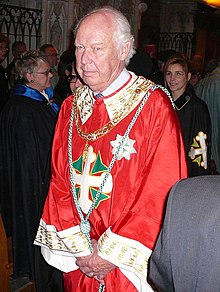
The House of Savoy in exile continues to bestow the order on recipients eminent in the public service, science, art, letters, trade, and charitable works. While the continued use of those decorations conferred prior to 1951 is permitted in Italy, the crowns on the ribbons issued before 1946 must be substituted for as many five-pointed stars on military uniforms.[7]
Organisation
[edit]Until 1851, the knights of the order were divided into Knights of Justice, who had to proof nobility of at least eight great-grandparents, and Knights of Grace, who, like theKnights of the Most Holy Annunciation,where suspended from the proof. Both Knights of Justice and of Grace had to vowobedienceto the Grand Master,chastityat least outside marriage (castità almeno conjugale,which meant they could marry with papalplacet) and help towards the sick and poor.
In 1831,Charles Albert of Sardiniamade the vow of the Knights of Grace facultative, and in 1851 the category of Justice was abolished byVictor Emmanuel II.
Today, women can be appointed as Dames, and a new category of Knights and Dames of Devotion was introduced in 1988. Also, the Grand Master can appoint hereditaryjus patronatusCommanders of Merit.
Grades
[edit]Originally, the order was divided into Knights Petit Cross and Knights Grand Cross, the latter worn at the neck, the former on the chest. TheCommendatori,who owned acommandery,weren't bestowed with a specific insignia. In 1831, Charles Albert of Sardinia divided the order into three classes:
- Knight Grand Cross with the Grand Cordon
- Knight Commander
- Knight

Since 1855, the Order is divided into five classes for the Knights (male members):[8]
- Knight Grand Cordon,who wear a sash on the right shoulder to the left hip and the badge as well as star are worn on the left side;
- Grand Officer,who wear a necklet plus the star on the left chest;
- Commander,who wear a necklet;
- Officer,who wear a medal in Gold on the left side of the chest;
- Knight,who wear a smaller Medal in Silver on the left side of the chest.
For female members the Order is divided into in three classes:
- Dame Grand Cordon,wearing a sash similar to that of their male counterparts
- Dame Commander,who wear on a necklet. During daydress: wear a bow-formed necklet worn on the left side of the chest. During evening wear: bow formed necklet worn on the left side of the chest)
- Dame,who wear a smaller necklet; During daydress and evening wear: bow formed medal worn on the left side of the chest
Special Class of the Order:
- Knight Grand Cordon, Special Class,For the Grand Master of the Order; who wear a sash on the right shoulder to the left hip, the badge as well as star which is worn on the left side of the stomach are inBrilliants
Insignia
[edit]
- Thebadgeof the order is ingilt,consists of a white-enameledcross bottonyof the Order of Saint Maurice, with a green-enameledMaltese Cross,the Cross of the Order of Saint Lazarus, placed insaltirebetween the arms of the cross botonny. The badge of each class except that of Knight and Dame is topped by a gilt crown.

- Thestarof the Order is a silver-faceted star, with eight points for Grand Cross and four points for Grand Officer, and with the badge (minus the crown) superimposed upon it.
- Thebreast crossfor the "jus patronatus" Commander is identical to the badge, minus the crown.
- Theribbonof the Order is apple green, with slight variations for the several classes:
Council
[edit]The council is responsible for running the order, the order focuses mainly on charitable acts.[9]
Until 1831, it was composed of the First Secretary of the Grand Magistracy (not to be confused with the Secretary of the Council itself), the Auditor General and seven dignitaries (Grandati):
- Grand Prior,aclergymanwithepiscopal rankas the
- Grand Admiral,the commander of the order's navy
- Grand Marshal,the commander of the order's land forces
- Grand Hospitaller, administrator of the order's hospitals
- Grand Conservator, administrator of the order's estates
- Grand Chancellor, head of the order'schancery
- GrandTreasurer
In 1831, the offices of Grand Admiral and Grand Marshal were abolished since the absence of an army. In 1851, the offices of Grand Conservator and Grand Chancellor where merged with the office of the First Secretary of the Grand Magistracy and the Grand Treasurer got renamed as Treasurer General, who also served as Vice Chairman of the Council. The other nine members, among them an annual Chairman of the Council, who replaced the Grand Prior, where chosen by the Grand master.
From 1861 to 1946, the council also served as the council of theOrder of the Crown of Italy.
Today, some of the old offices are re-established.
- Chairman:Vacant
- Vice Chairman: Antonio d’Amelio
- Grand Chancellor: Theo Niederhauser
- Grand Treasurer: Nicolas Gagnebin
- Grand Prior: Monsignor Paolo de Nicolò
- Grand Master of Ceremonies:Prof.Alberto Bochicchio
- H.S.H.Mariano Hugo, Prince of Windisch-Graetz
- H.S.H.DonAlessandro Jacopo Boncompagni Ludovisi Altemps
- DonGiancarlo Melzi d’Eril dei Duchi di Lodi
- DonCarlo Buffa dei Conti di Perrero – Honorary Member
Junta
[edit]The Junta is responsible for voting in newKnightorDameto the dynastic order on behalf of the grand master,Emanuele Filiberto, Prince of Venice.There are always five members of the Junta to ensure that there is never an equal count in votes for and against a new possible newKnightorDame.[9]
- H.S.H.DonAlessandro Jacopo Boncompagni Ludovisi Altemps – President
- DonPaolo Thaon di Revel Vandini – Secretary
- DonEnrico Sanjust dei Baroni di Teulada
- Gualtiero Ventura
- Federico Pizzi
List of Grand Masters
[edit]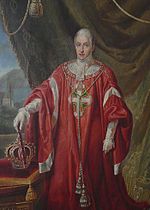
- Emmanuel Philibert, Duke of Savoy(1572-1580)
- Charles Emmanuel I, Duke of Savoy(1580-1630)
- Victor Amadeus I, Duke of Savoy(1630-1637)
- Francis Hyacinth, Duke of Savoy(1637-1638)
- Charles Emmanuel II, Duke of Savoy(1638-1675)
- Victor Amadeus II of Sardinia(1675-1731)
- Charles Emmanuel III of Sardinia(1732-1773)
- Victor Amadeus III of Sardinia(1773-1796)
- Charles Emmanuel IV of Sardinia(1796-1802)
- Victor Emmanuel I of Sardinia(1802-1824)
- Charles Felix of Sardinia(1824-1831)
- Charles Albert of Sardinia(1831-1849)
- Victor Emmanuel II of Italy(1849-1878)
- Umberto I of Italy(1878-1900)
- Victor Emmanuel III of Italy(1900-1946)
- Umberto II of Italy(1946-1983)
- Vittorio Emanuele, Prince of Naples(1983-2024)
- Emanuele Filiberto, Prince of Venice(2024-present)
Recipients in selection
[edit]
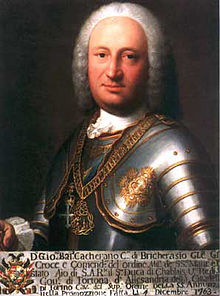

Monarchs
[edit]- Franz Josef I, Emperor of Austria
- Wilhelm II, German Emperor
- Nicholas II, Emperor of Russia
- Gojong, Emperor of Korea
- Haile Selassie,Emperor of Ethiopia
- Zog I, King of the Albanians
- George V,King of the United Kingdom
- Mozaffar ad-Din Shah QajarofShah of Persia
- H.M.E.H.Servant of GodFra'Andrew Bertie,Prince and Grand Master of the Sovereign Military Order of Malta
- MaharajaJagatjit Singh
- MaharajaJuddha Shumsher Jang Bahadur Rana
- Mihailo ObrenovićofSerbia
- Abbas I,WāliofEgypt
Military
[edit]- General of the ArmiesJohn Pershing
- General of the ArmyGeorge Marshall
- Field MarshalWalther von Brauchitsch
- Field MarshalFrancisco Solano López
- GeneralMatthew Bunker Ridgway
- GeneralFrançois d'Astier de La Vigerie
- GeneralTasker H. Bliss
- GeneralMark W. Clark
- GeneralIra C. Eaker
- GeneralPeyton C. March
- AdmiralErnesto Burzagli[10]
- Surgeon Rear-AdmiralArthur Skey
- Major GeneralUlysses S. Grant III
- Major GeneralMason Patrick[11]
- GeneralSebastiano Visconti Prasca
- Rear AdmiralRichard Byrd
- Brigadier GeneralBilly Mitchell
- Naval CaptainEmilio Faà di Bruno
- Flight CommanderDouglas Harries
- SS-ObergruppenführerHans Lammers
- Field MarshalPlaek Phibunsongkhram
- Brigadier GeneralEvan M. Johnson[12]
- Brigadier GeneralWalter McCaw[13]
- Rear AdmiralCharles R. Train[14]
Politics
[edit]- DiplomatIsaac Artom
- Tomáš Garrigue Masaryk,1921
- Enrico d’Arienzo, Prefect of Caltanisetta 1925
- Henri Jaspar
- Charles, 1st Count de Broqueville
- Charles Rogier
- Edmond, Baron de Sélys Longchamps
- PresidentPorfirio Díaz
- DrHans Frank,26.9.1936[15]
- Minister of foreign affairsGiustino Fortunato[16]
- Member of ParliamentCristiana Muscardini
- DiplomatJose Maria Quijano Wallis[17]
- Luigi, Count Cibrario
- Oswald, Freiherr von Richthofen,State Secretary for Foreign Affairs of the German Empire-August 1902- during the visit to Germany of KingVictor Emmanuel III of Italy[18]
- President of the 1904Louisiana Purchase Expositionand Former St. Louis MayorDavid R. Francis[19]
- MayorRudolph Giulianiof New York City (2001) Cavaliere di Gran Croce (Motu Proprio)[20]
- Aldo Oviglio,Minister of Justice (1922–1925)
- James Charles Risk of New York City, Cavaliere di Gran Croce,[21]originally inducted by the last reigning King of Italy,Umberto II of Italy
- Benito Mussolini,Prime Minister of ItalyandDuce of Fascism
Culture
[edit]- ArchitectCarlo Rainaldi
- ArchitectGiovanni Battista Medunaand his brother, engineerTommaso Meduna[22]
- SculptorChristopher Ross
Priests
[edit]- Pietro Tacchi Venturi
- Agostino Cardinal Rivarola
- BlessedTommaso Reggio
- Timothy Michael Cardinal Dolan
- Désiré-Félicien-François-Joseph Cardinal Mercier
- BlessedAndrea Carlo Cardinal Ferrari
Sciences
[edit]Philanthropy
[edit]Recipients (amongst others)
[edit]- Emanuele Filiberto of Savoy, Prince of Venice,KnightGrand Cross
- Clotilde Courau,Princess of Venice
- Princess Vittoria of Savoy,Princess of CarignanoMarchioness of Ivrea
- Princess Luisa of Savoy
- Marina Doria,Princess of Naples andDuchess of Savoy
- Princess Maria Pia of Bourbon-Parma
- Princess Maria Gabriella of Savoy
- Princess Maria Beatrice of Savoy
- Prince Dimitri of Yugoslavia
- Prince Michael of Yugoslavia
- Prince Sergius of Yugoslavia
- Princess Helen of Yugoslavia
- Princess Diana Elizabeth D'Hauteville
- Nicholas, Crown Prince of Montenegro
- Prince Carlo, Duke of Castro
- H.S.H.Mariano Hugo, Prince of Windisch-GraetzKnightGrand Cross
- H.S.H.DonAlessandro Jacopo Boncompagni Ludovisi AltempsKnightGrand Cross
- DonPaolo Thaon di Revel VandiniKnightGrand Cross
- DonEnrico Sanjust dei Baroni di TeuladaKnightGrand Cross
- Prof.Alberto BochicchioKnightGrand Cross
- DonCarlo Buffa dei Conti di PerreroKnightGrand Cross
- DonGiuseppe dei Conti RizzaniKnightGrand Cross
- Rudy GiulianiKnightGrand Cross
- Giovanni CheliKnightGrand Cross
- DonGiancarlo dei DuchiMelzi d'ErilKnightGrand Cross
- DonAndrea dei Conti Boezio Bertinotti Alliata
- Andrea RivoiraGrand Cross
- Antonio d’AmelioGrand Cross
- Franca SciaraffiaGrand Cross
- Nicolas GagnebinGrand Cross
- Theo NiederhauserGrand Cross
- Monsignor Paolo de NicolòGrand Cross
- Alberto Di Maria Knight Grand Officer
- Luigi AcquavivaGrand Officer
- DameZina Losapio
- Alessandro Santini
- Alberico Guerzoni
- Giovanni Cheli
- Rudy Giuliani[citation needed]
See also
[edit]- List of Italian orders of knighthood
- Dynastic order of knighthood
- Order of Merit of the Italian Republic
References
[edit]- Miller, Michael (2015).Leaders Of The Storm Troops Volume 1.England: Helion & Company.ISBN978-1-909982-87-1.
Notes
[edit]- ^"THE DYNASTIC ORDERS".Dynastic Orders of the Royal House of Savoy.
- ^"Order of Saint Lazarus: Primary sources"(PDF).um.edu.mt.Retrieved22 August2023.
- ^"About Savoy Foundation".SAVOYFOUNDATION-USA.ORG.Retrieved22 August2023.
- ^"Orders connected to the Order of St. John of Jerusalem".orderstjohn.org.18 December 2023. Archived from the original on 28 October 2007.
{{cite web}}:CS1 maint: unfit URL (link) - ^abc"ITALY".haileybury.
- ^Established by Royal Magistral Patent dated 19 July 1839, approved by Royal Decree of 21 December 1924 and renewed byLaw No. 203(1) of 7 March 1954Medaglia Mauriziana al Merito di dieci lustri di carriera militare,published in Gazzetta Ufficiale, No. 116, 21 May 1954, as amended by Law No. 1327 of 8 November 1956
- ^Ordini Cavallereschi del Regno d'ItaliaArchived2006-05-07 at theWayback MachineCorpo della Nobiltà Italiana (retrieved 10 September 2009)
- ^Ordine dei Santi Maurizio e Lazzaro Statuto- website of the Grand Magistracy of the Dynastic Orders of the House of Savoy
- ^abCavicchioli, Silvia (1 November 2002)."Strategie nobiliari di sopravvivenza tra Napoleone e Casa Savoia. I Ferrero della Marmora, 1798-1815".Italies(6): 117–143.doi:10.4000/italies.1563.ISSN1275-7519.
- ^Senato della Repubblica:biographical summary
- ^Head, William Pace (1995). Every Inch a Soldier: Augustine Warner Robins and the Building of U.S. Airpower Volume 37 of Texas A & M University military history series. Texas A&M University Press, 1995: Issue 37, p. 75ISBN0890965900,9780890965900https://books.google /books?id=5utyzXwyh1MC&dq=italian+order+of+st.+maurice+and+st.+lazarus+%22mason+patrick%22&pg=PA75Retrieved November 2, 2012.
- ^"Gen. Evan M. Johnson".The Philadelphia Inquirer.Philadelphia, PA. 14 October 1923. p. B25 – viaNewspapers.
- ^Davis, Henry Blaine Jr. (1998).Generals in Khaki.Raleigh, NC: Pentland Press. p. 250.ISBN978-1-57197-088-6.
- ^"Wins Medal While Serving in Adriatic Sea".The Honolulu Advertiser.11 April 1938. p. 15.Retrieved21 August2022– viaNewspapers.

- ^Miller 2015,p. 452.
- ^Collezione delle Leggi e de'Decreti Reali del Regno delle Due Sicilie,Stamperia reale, 1846, p.85
- ^"Papel Periódico Ilustrado Volúmen 1 año I Número 1 al 14".Archived fromthe originalon 3 December 2013.
- ^"Latest intelligence - The King of Italy in Berlin".The Times.No. 36859. London. 29 August 1902. p. 3.
- ^Lab, Missouri Historical Society."Missouri Historical Society - Find Yourself Here".The Missouri Historical Society is... Missouri Historical Society and was founded in 1866.
- ^"Events: 2001".House of Savoy.Retrieved1 April2009.
- ^"Tricolore 10 Febbraio, 2006"(PDF).Tricolore of Italy reporting on the Ballo di Savoia.Retrieved17 September2019.
- ^Ordine dei Santi Maurizio e Lazzaro (1870).Elenco alfabetico dei decorati dell'Ordine dei SS. Maurizio e Lazzaro dal 17 marzo 1861 (proclamazione del Regno d'Italia) al 31 dicembre 1869(in Italian). Stamperia Reale. p. 113.
- ^Ruffy, G., ed. (1924).Qui êtes-vous? Annuaire des contemporains: notices biographiques. 1908-1908/10, 1924.Paris: Librairie Delagrave. p. 741.





